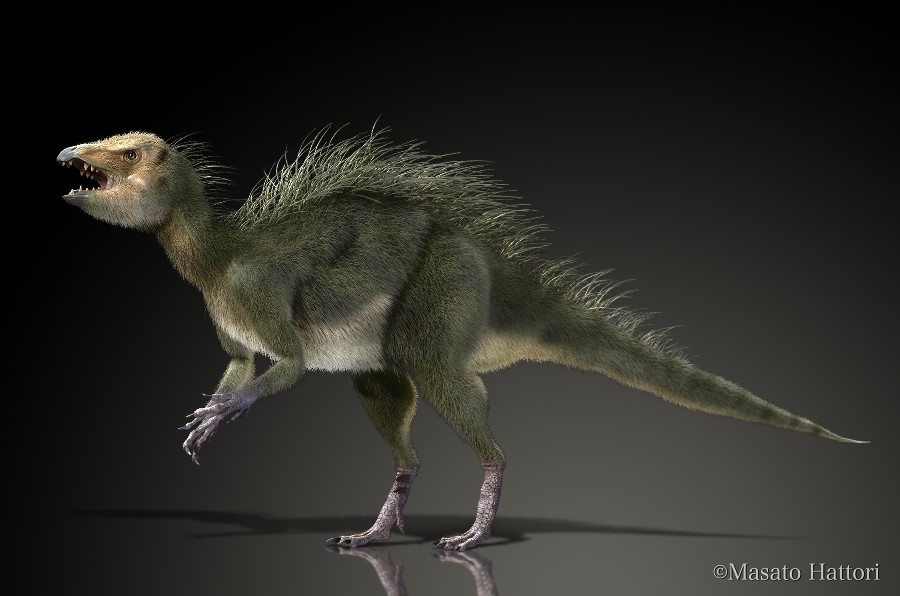A double entry! Yinlong is one of the most interesting dinosaurs of recent years to be discovered—a tiny basal ceratopsian; even more basal and older than Psittacosaurus, although somewhat similar on the ouside. Yinlong also has some unusual synapomorphies with pachycephalosaurs that other more derived ceratopsians do not, although that's not surprising. It also recovers surprisingly close to the heterodontosaurs, which was more surprising. In fact, it's sufficiently similar and comes out in cladograms such that it makes significant changes to the cladograms of ornithischians overall. Heterodontosaurs are now shown to be very closely related to marginoceratopsians, and together they form a sister-clade to ornithopods called heterodontosauriformes. Curiously, all of our feathery ornithischians are in this group. Previously, I have suggested that because of where heterodontosaurs were located, it was the best proof that feathers (or filamentous protofeathers of some kind, at least) were ancestral to dinosaurs because they were in the second most basal position in ornithischia as well as in therapoda. That's not quite as true now, but still—with several ceratopsians and heterodontosaurs showing evidence of filaments along with therapods, we're covered pretty well. About the only thing that would do to improve the picture (although I don't know that it's precisely necessary) would be to have evidence for feathers show up in a prosauropod and small ornithopod or something like that. Maybe even a fabrosaur. (Maybe Kulindadromeus will pan out here.)
Anyhoo—the other interesting thing about Yinlong is that it comes from the same Chinese formation that has Mamenchisaurus, Yangchuanosaurus and Guanlong—a kind of analog to the Morrison, if you will, but a little bit earlier. We already suspected that ceratopsians originated in Asia because of Psittacosaurus and Protoceratops, but this is much earlier than we thought. Curiously, the greatest diversity of the clade is, of course, in North America, and at the end of the Cretaceous, they seem to have been extinct in Asia. In fact, the big, rhino and elephant sized classic horned dinosaurs all seem to come from North America (with the probable exception of Turanoceratops.)
And if Yinlong is a surprisingly early ceratopsian that proves—surprisingly—that they were relatively closely related to the heterodontosaurs, well Fruitadens is a surprisingly late heterodontosaur; from the Morrison quarries near Fruita Colorado. Probably the smallest ornithischian found, and one of the very latest of the heterodontosaurs, these two animals show, among other things, that there very very long ghost lineages (quite possibly in both directions; younger and older) have to exist, meaning that there is a lot we still don't know about dinosaur ecosystems.
As an aside; with these models and those faces, it's not at all hard to see the relationship, is it?



No comments:
Post a Comment